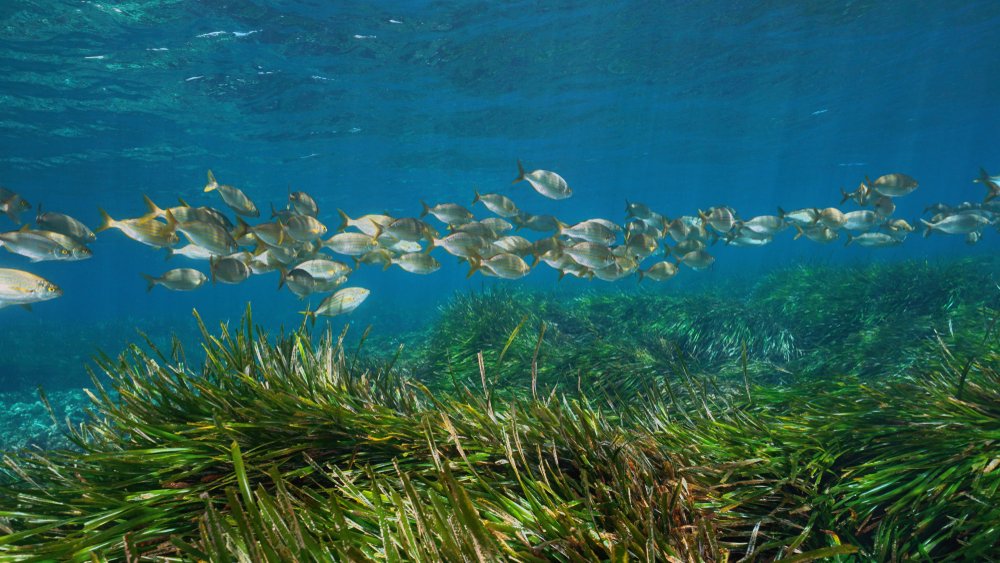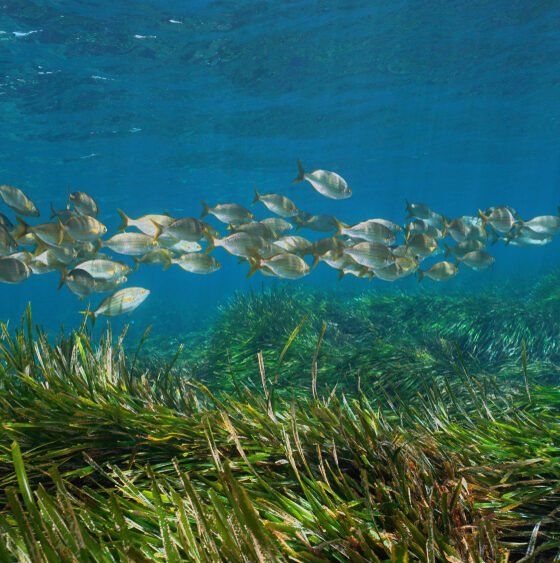

Environment
Emerging Research In Seagrass Restoration: What Does The Future Hold?
Seagrasses, often overshadowed by the more celebrated coral reefs, are critical components in the complex tapestry of marine ecosystems. Despite their indispensable role, they face increasing threats from climate change, pollution, and anthropogenic activities. Hence, there is an urgent need to focus on restoration efforts that can effectively mitigate the losses and contribute to long-term sustainability.
This article explores the emerging research in the field of seagrass restoration. By highlighting recent advancements, innovative methodologies, and interdisciplinary approaches, it presents a comprehensive overview of the future of these vital underwater landscapes.
Genetic Resilience And Adaptation
One of the most exciting areas of focus in seagrass restoration is understanding different seagrass species’ genetic resilience and adaptive capacity.
Scientists are now sequencing genomes to pinpoint specific genetic traits that make certain seagrass varieties more resilient to environmental stresses like higher salinity or temperature fluctuations. This information could prove invaluable for selecting the most robust strains for restoration projects.
Moreover, genetic research extends to studying epigenetic markers, which are chemical modifications in DNA that influence gene expression without changing the underlying sequence. Through epigenetic mapping, researchers can identify how seagrasses adapt to environmental stresses over time, providing an extra layer of information for resilience strategies.
The genetic and epigenetic data acquired through research can serve as a roadmap for planting resilient seagrass meadows, thereby increasing the success rate of restoration initiatives.
Eco-friendly Materials For Transplanting
Traditional seagrass restoration often involves physically transplanting seagrass shoots into new areas, a process that can be resource-intensive and susceptible to failure. However, research is now focusing on developing eco-friendly materials to facilitate successful transplantation.
Biodegradable mats and frames are one example. They are designed to anchor seagrass shoots and protect them from being washed away by currents. These materials degrade naturally, leaving behind a healthy, rooted seagrass bed. Additionally, using natural fibers like coconut coir instead of synthetic materials reduces the environmental impact even further.
The objective is to create a conducive environment for the young seagrass plants to grow and mature. These innovative materials represent a paradigm shift in restoration techniques, offering a more sustainable and effective way to rebuild these critical ecosystems.
Remote Sensing Technologies
The advent of remote sensing technologies has revolutionized the monitoring capabilities of seagrass restoration projects. High-resolution satellite imagery, drone footage, and underwater remotely operated vehicles (ROVs) are now being deployed to collect crucial data on seagrass meadows’ health, growth, and coverage.
This technology allows for continuous, large-scale monitoring without the need for labor-intensive fieldwork, thereby increasing the efficiency of restoration projects. Data collected can inform real-time adjustments to restoration strategies, such as identifying areas that may require additional seagrass shoots or different species.
Ultimately, remote sensing technologies serve as the eyes and ears of restoration efforts. Their incorporation into research projects and restoration initiatives significantly enhances our ability to make data-driven decisions and improve outcomes.
Artificial Intelligence And Data Analytics
Artificial intelligence (AI) and data analytics are rapidly becoming indispensable tools in environmental conservation, and seagrass restoration is no exception. Machine learning algorithms can process vast amounts of data, from water quality parameters to growth rates, to make predictive models for restoration success.
These models can provide actionable insights into optimal planting times, species selection, and site-specific environmental conditions by analyzing past and current data. In some cases, AI can even identify patterns or factors that may not be immediately obvious to human researchers, thereby enriching the overall understanding of seagrass ecosystems.
Integrating AI and data analytics into seagrass restoration augments human capabilities and streamlines the decision-making process. By leveraging the power of these technologies, restoration projects can become more targeted, efficient, and adaptive to changing environmental conditions.
International Collaboration
As seagrasses know no borders, international collaboration becomes vital for restoration success. Research organizations and environmental agencies from different countries are starting to pool their resources and share insights to tackle the global decline in seagrass ecosystems.
Unified databases and standardized methodologies are being developed for seamless collaboration and data sharing. This cross-border cooperation accelerates innovation, bringing diverse skill sets and perspectives to the problem-solving table.
The ethos is simple: what works well in one country’s waters may very well be applicable, with some adjustments, in another. Such collaborative efforts can potentially raise the bar for seagrass restoration globally, turning localized successes into global triumphs.
Conclusion
The future of seagrass restoration appears promising, buoyed by advancements in genetic research, the development of eco-friendly transplanting materials, state-of-the-art remote sensing technologies, community engagement through citizen science, and international collaborations. Each of these avenues brings unique solutions and challenges, yet all share the goal of restoring and preserving underwater ecosystems for generations to come. With the continued focus on innovative research and adaptive strategies, there is hope that the decline in seagrass habitats can be halted and even reversed.


 Environment9 months ago
Environment9 months agoAre Polymer Banknotes: an Eco-Friendly Trend or a Groundswell?

 Environment11 months ago
Environment11 months agoEco-Friendly Home Improvements: Top 7 Upgrades for 2025

 Features8 months ago
Features8 months agoEco-Friendly Cryptocurrencies: Sustainable Investment Choices

 Features10 months ago
Features10 months agoEco-Friendly Crypto Traders Must Find the Right Exchange

















